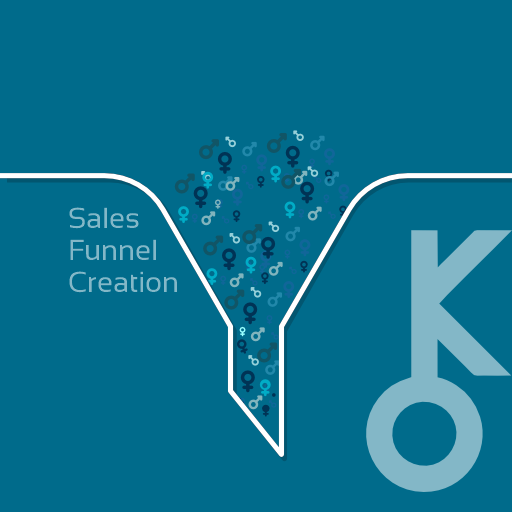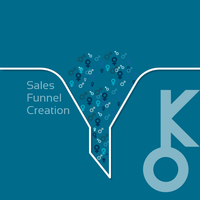Sales Funnel Recovery Strategies

Sales funnels are a critical component of any successful sales and marketing strategy. They help businesses attract, engage, and convert potential customers into paying clients. However, even the most well-designed sales funnel can encounter roadblocks or underperform at times. This is where troubleshooting and recovery strategies come into play.
Identifying the Problem
The first step in troubleshooting a struggling sales funnel is to identify the problem areas. This involves analyzing key metrics along each stage of the funnel, such as traffic sources, conversion rates, average order value, and customer retention rates. By identifying areas with low performance or drop-offs in the customer journey, you can pinpoint specific issues that need attention.
Examining Funnel Components
Once problem areas have been identified, it's important to closely examine the different components within your sales funnel:
Lead Generation: Assess how effective your lead generation efforts are by evaluating lead sources and lead quality. It may be necessary to review targeting criteria or adjust messaging to attract more qualified leads.
Awareness Stage: Evaluate whether your marketing campaigns effectively introduce your products or services to potential customers. Consider if there are barriers preventing prospects from moving forward in their buyer journey.
Consideration Stage: Analyze whether your content is providing valuable information that helps prospects make educated decisions about purchasing from you versus competitors.
Conversion Stage: Examine your offers and calls-to-action (CTAs) to determine if they are compelling enough for prospects to take action. Evaluate landing page design and optimize them for better conversions.
Retention Stage: Assess if you're adequately nurturing existing customers with post-purchase interactions such as follow-up emails or personalized recommendations aimed at encouraging repeat business.
Implementing Recovery Strategies
Based on your analysis of the sales funnel components, now it's time to implement recovery strategies targeted towards resolving identified issues:
Optimize Landing Pages: Enhance the design, copy, and layout of your landing pages to improve conversions. Utilize persuasive elements like testimonials, social proof, and clear CTAs.
Revise Lead Qualification: Refine your lead qualification criteria or update lead generation strategies to attract higher quality leads that are more likely to convert.
A/B Testing: Conduct A/B testing on various parts of your sales funnel such as email subject lines, CTA placement, or offer positioning. Analyze results and implement changes accordingly.
Improve Customer Experience: Assess customer feedback and identify areas where customers may be encountering friction or difficulties during their journey through the funnel. Make necessary adjustments to remove these roadblocks.
Personalization Tactics: Implement personalized messages and offers based on customer preferences and behavior data gathered during interactions with your funnel.
Provide Additional Resources: Consider offering additional resources (e.g., eBooks, webinars) that add value for potential customers at different stages of the funnel to build trust and engagement.
Segmentation Strategies: Segmenting your audience allows you to tailor messaging specific to their needs and interests. Develop targeted campaigns catered towards each segment's preferences for greater impact.
Continuous Monitoring & Adjustments: Once recovery strategies have been implemented, closely monitor key metrics while remaining open to making further adjustments as needed based on ongoing evaluation of performance.
By proactively troubleshooting issues in your sales funnel and implementing recovery strategies tailored specifically to address those issues, you can regain traction in attracting quality leads and converting them into loyal customers.
Sponsored
Sponsored
Sponsored
Explore More:

The Impact of AI and Machine Learning
As technology continues to advance at a rapid pace, businesses are constantly looking...

Future of Sales Funnels
The future of sales funnels is an exciting and promising concept for businesses...

Lessons Learned from Failed Funnels
In the realm of sales funnel creation, case studies serve as valuable resources...

Successful Sales Funnel Examples
In sales funnel creation, case studies play a crucial role in demonstrating the...

Case Studies in Sales Funnel Creation
In the world of sales and marketing, case studies play a crucial role...

Improving Funnel Efficiency
A sales funnel is a crucial component of any business's marketing strategy. It...

Identifying Funnel Leaks
A sales funnel is a systematic approach to guiding potential customers through a...

Sales Funnel Troubleshooting
Sales funnel troubleshooting is the process of identifying and resolving issues or bottlenecks...

Sales Funnel Tools and Software: Landing Page Builders
Sales funnels are essential in driving conversions and increasing revenue for businesses. To...

Sales Funnel Tools and Software: Email Marketing Tools
Sales funnel tools and software refer to the various technologies and platforms available...

Sales Funnel Tools and Software: CRM Software
Sales funnel tools are software programs or applications designed to help businesses track...

Sales Funnel Tools and Software
A sales funnel is a framework used by businesses to guide potential customers...

Measuring Sales Funnel Performance: Analytics and Reporting
Measuring sales funnel performance analytics and reporting is a crucial aspect of any...

Measuring Sales Funnel Performance: Sales Funnel Metrics
Measuring the performance of your sales funnel is crucial for understanding the effectiveness...

Measuring Sales Funnel Performance: Key Performance Indicators (KPIs)
Measuring the performance of a sales funnel is crucial for any business aiming...

Measuring Sales Funnel Performance
Sales funnel performance measurement is a crucial aspect of any business operation. It...